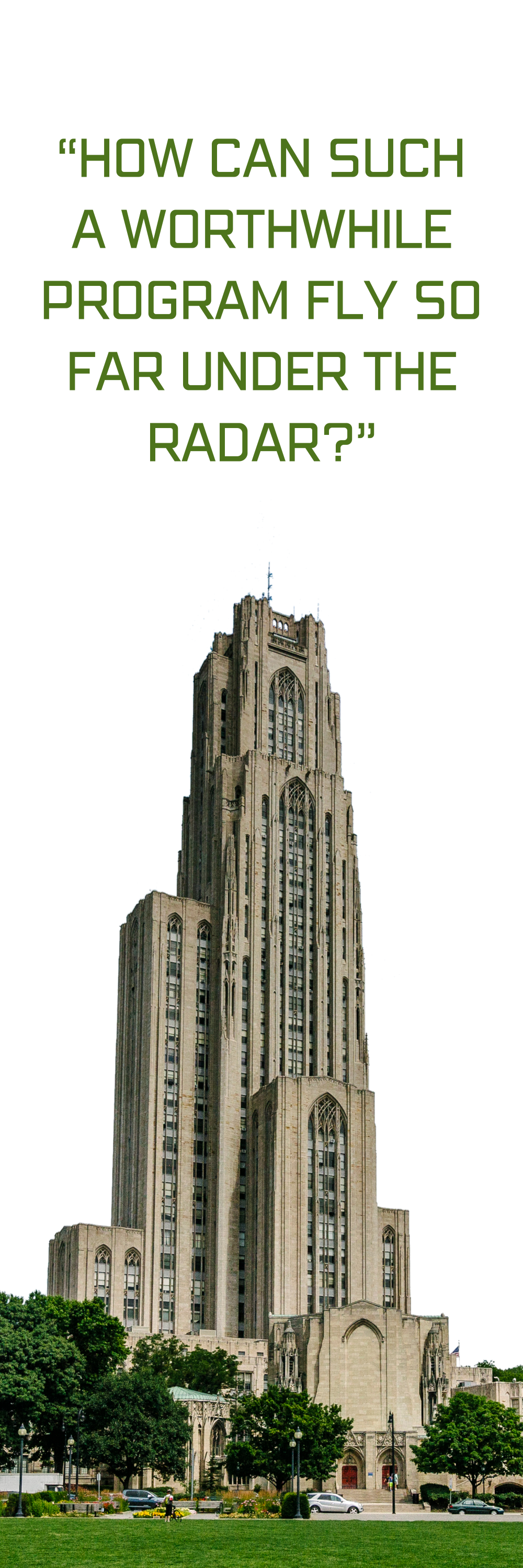A Hidden Gem: How Dual Credit Programs Transform High School Education
University of Pittsburgh College in High School Program
Dual credit—aka dual enrollment or concurrent enrollment—is a partnership allowing high school students to earn transferable postsecondary credits, and is a proven and inexpensive mode of education, career exploration and skill acceleration. So why have so few people heard of it?
It’s not because it’s new or unpopular: Dual credit programs first started in our region in 1980 with the University of Pittsburgh’s College in High School (CHS) program, with 16 students in a calculus class at North Hills High School. (Last year CHS enrolled almost 5,000 students.) Since 1980, other institutions of higher education have also started offering credit in our region.
And it’s not because it’s inflexible or ineffective. Diverse models of dual credit are flourishing, such as students enrolling in regular undergraduate courses, higher education faculty teaching in high schools, or students learning from their high school teachers who work with college faculty to meet on-campus course standards. Research shows that students who participate in a quality program:
• are more likely to meet college-readiness benchmarks,
• have a lower likelihood of college placement into remedial English or math,
• attain higher four- and six-year college completion rates, and
• have a shorter time to bachelor’s degree completion.
Additionally, dual credit is especially effective at helping able students who are at risk of not continuing on to postsecondary education after high school.
So how can such a worthwhile program fly so far under the radar? The first reason is that for many years, opportunities were offered to only the highest-achieving students, so only their families became aware; luckily, this is changing as programs now offer subjects like algebra, sustainability, introductory coding and IT, appropriate for a broader range of students. Second, unlike most states, Pennsylvania has almost no state guidance or funding for programs, so opportunities are based on a patchwork of interested teachers and college faculty; one high school might offer two dozen opportunities with multiple colleges, and neighboring schools—often the most-underserved schools—might only have one.
And although the tuition cost is usually substantially reduced (less than 10% of normal tuition rates in CHS), the cost of these programs can be a barrier for families. CHS has additional scholarships to reduce the cost even further, but not every program can provide such benefits.
Finally, probably the biggest hindrance to growth and awareness of programs is a lack of common quality standards. Of the many higher education providers in Pennsylvania, only two programs—University of Pittsburgh and Penn Highlands Community College—have earned accreditation from their professional body’s accrediting organization, the National Alliance of Concurrent Enrollment Partnerships (NACEP). Without standards to ensure authenticity and transferability of credits, programs can exist which do not lead to useful credits.
Dual credit opportunities are growing. Programs now offer courses in STEM fields, college/career preparation, languages, arts, social sciences and professional fields. To learn more about options near you, contact local high school counseling offices to see what is available. Or you can explore regional providers such as the following:
• Butler County Community College
• Carlow University
• Chatham University Community College
of Allegheny County
• Community College of Beaver County
• Grove City College
• LaRoche University
• PennWest University
• Saint Vincent College
• University of Pittsburgh
• Waynesburg University
To learn more about the University of Pittsburgh’s College in High School office, visit chs.pitt.edu or call 412-624-6828.
